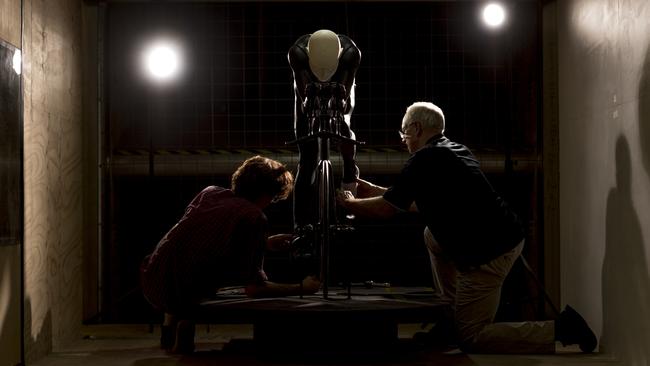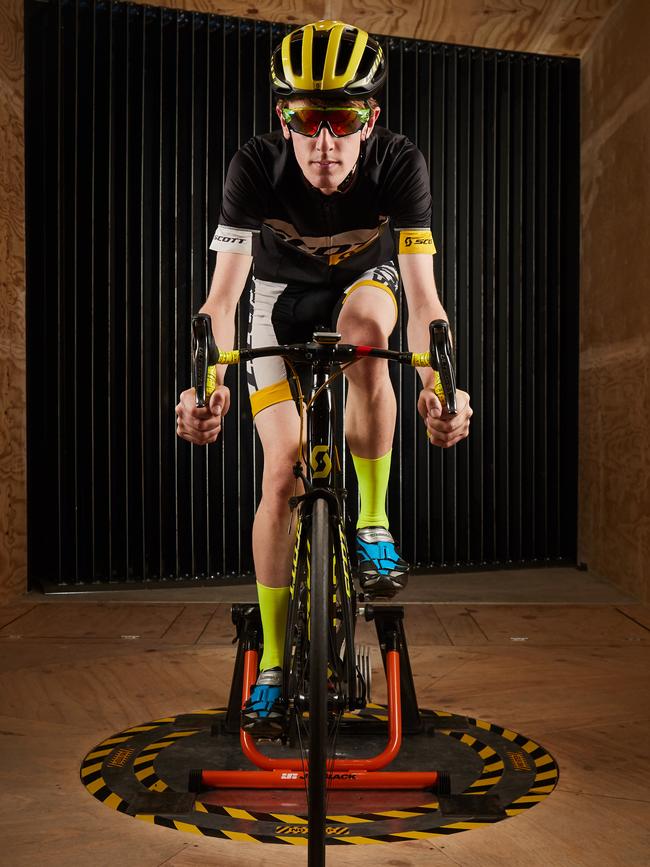University of Adelaide helps design Australian Cycling Team's secret weapon for Tokyo 2020 with Argon 18
The Australian cycling team has a secret weapon for the 2020 Games in Tokyo — designed in Adelaide with a full-sized mannequin in sophisticated wind tunnel testing.

SA News
Don't miss out on the headlines from SA News. Followed categories will be added to My News.
Adelaide sports engineers have played an integral role in designing and perfecting Australian Cycling Team's secret weapon for Tokyo 2020 using a full-sized cycling mannequin in sophisticated wind tunnel testing.
University of Adelaide Associate Professor Richard Kelso has been working with Cycling Australia for a decade, designing and testing better helmets, bike frames and wheels.
“We did quite a lot of work for the Rio equipment but for the bike for Tokyo 2020, we've been working with Cycling Australia to perfect a new design,” he said.
“They have a new manufacturing partner, Argon 18, a fantastic company, they have a lot of engineers involved, so we've been working with them and Cycling Australia to develop a new bike for the track team.

“We've been doing a lot of testing in our wind tunnel and we developed the pedalling mannequin so we can more accurately simulate the complete flow field around the bicycle and cyclist.
“The design has been locked in, it's all done, we've finished our work and it's going to be brilliant.”
While Cycling Australia is yet to release any details of the Tokyo 2020 low-drag frame and wheels, the new partnership with Argon 18 and Zipp wheels was announced amid much excitement in June last year.
At the time, Argon 18 head of R&D, Martin Faubert celebrated the new partnership with Cycling Australia’s engineers.
“Working in collaboration with Cycling Australia our goals are precise, and we target on nothing less but the fastest bike in the world,” he said.
“We’re already hard at work with their engineers and mechanics, we want to bring home Gold as much as they do.”
Associate Professor Kelso has a proven track record with a successful series of five super-fast and cool low-drag helmet designs, starting with the Scott Vanish Aero in 2012-13. The Scott Cadence and Scott Centric (pictured) followed soon after.
“The Cadence and Centric have been worn to numerous road racing and mountain bike victories, including world championships,” Dr Kelso said.
“They are used by the Mitchelton-Scott professional cycling team, here at the TDU.”
Then came the Kask Mistral, designed in conjunction with Cycling Australia prior the Rio Olympics and used by the track team.
“It has since been worn with much success at the Commonwealth Games — four gold medals and one world record — and several world championships on the track. It was also one of the most commonly-used helmets at the Road World Championship time trial in 2018.”
But his favourite creation is yet to be released, a new fast and cool time trial helmet design being used by the Mitchelton Scott cycling team.



